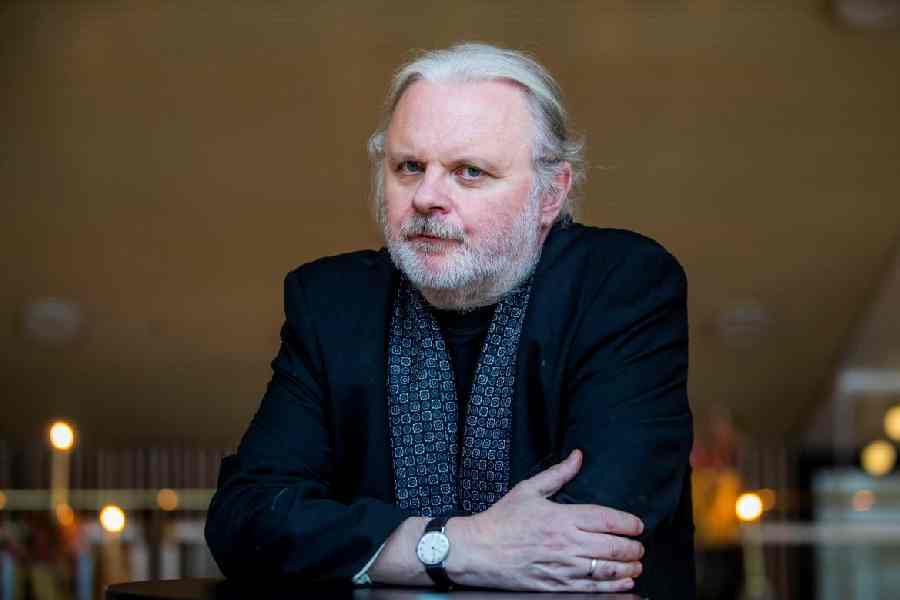Jon Olav Foss, the winner of the Nobel Prize in Literature in 2023, has done something unique in the realm of literature with an inventiveness that earned his writing style the epithet of ‘Fosse Minimalism’. His pared-down art of writing in a little-known language, Norwegian Nynorsk (New Norwegian), becomes a sort of meditation for the reader. In the very act of reading Fosse’s fiction, poetry or plays, the reader lives in the depths of such intense absorption and becomes the characters in his works, sharing in their transcendental thoughts. His characters’ engagements about life, living, self, other, and impermanence, touch hearts and minds in a way that few other writers of our times can claim.
Born on September 29, 1959, in Haugesund, Norway, Fosse is a voice for the minority in his country that speaks New Norwegian. Aside from being a political statement, this valorisation of the marginalised by writing in that language gives Fosse the uniqueness of expression and articulation of a culture that is local but has immense universal reach. His courage and formidable accomplishment in the use of a very rare language in his works is what tipped the scales for him to win the Nobel Prize for Literature.
As the Nobel Prize committee said, Fosse outran the other nominees “for his innovative plays and prose, which give voice to the unsayable”. With his fiction debut in 1983, Fosse has written prose, poetry, essays, short stories, children’s books, and over 40 plays, with more than a thousand productions performed, and translations into 50 languages.
Fosse started writing around the age of 12, despite his claims that he was not very interested in books. As a teenager, he was interested in becoming a rock guitarist, and he began to dedicate more time to writing once he gave up his musical ambitions. Shades of Nobel fellow laureate Kazuo Ishiguro are certainly discernible in his musical obsession. He also played the fiddle and much of his teenage writing practice involved creating his own lyrics for musical pieces. Growing up, he was influenced by communism and has described himself as a hippie.
Fosse is the most performed Norwegian playwright since Henrik Ibsen, and Fosse himself invokes Samuel Beckett and George Trakl, and admits to the influence of Virginia Woolf and Franz Kafka on his work. Three times married and taking Catholicism as his new faith, Fosse has battled alcoholism throughout his life and his compassion for others seems to be rooted in the hard bites of reality he has had to face in his own life.
“His fiction is incantatory, mystical, and rooted in the landscape of the Western fjords where he grew up,” his publisher Testard said. “It’s very important to remember that he writes in Nynorsk or New Norwegian, a minority language in Norway, a political act in itself. He’s also an exceptional playwright and poet. He’s an incredible mind, and it couldn’t have happened to a nicer person.” Nobel committee chairman Anders Olsson said he was “a fantastic writer in many ways”. “He touches you so deeply when you read him, and when you have read one work you have to continue,” he added.
The poet T.S. Eliot echoes through his concept of the doppelganger where one of his characters presents two versions of the same self. His seven-story collection in three volumes, The Septology, is a remarkable exploration of God as all-pervading, and reminds the reader of Mahayana Buddhist philosophy.
One memorable passage from The Septology is a spirited appeal to this basic humanness: “...They think God is the reason why anything exists at all, and that’s true, yes, there are skies so beautiful that no painter can match them, and clouds, yes, in their endless movements, always the same and always different, and the sun and the moon and the stars, yes, but there are also corpses, decay, stenches, things that are withered and rotten and foul, and everything visible is just visible, whether it’s good or bad, whether it’s beautiful or ugly, but whatever is worth anything, what shines, the shining darkness, yes, is the invisible in the visible, whether it’s in the most beautiful clouds in the sky or in what dies and rots, because the invisible is present in both what dies and what doesn’t die, the invisible is present in both what rots and what doesn’t rot, yes, the world is both good and evil...”
The monologue, which progresses seemingly endlessly and without a single full stop over a time span of seven days, depicts an elderly artist speaking to himself as another person.
“The Septology is a major work, being at the same time as his attempt at reconciliation with his own fate, an elegy to his dead wife [and] dealing with his own career as a painter,” Olsson said.
Fosse’s family were Quakers and Pietists and he credits those humane philosophies with shaping his spiritual views. When he was seven years old, an accident gave him a close with death, and left a vivid mark in his writing.
Julie Banerjee Mehta is an author of Dance of Life and co-author of the bestselling biography Strongman: The Extraordinary Life of Hun Sen. She has a PhD in English and South Asian Studies from the University of Toronto, where she taught World Literature and Postcolonial Literature for many years. She currently lives in Calcutta and teaches Master’s English at Loreto College.






